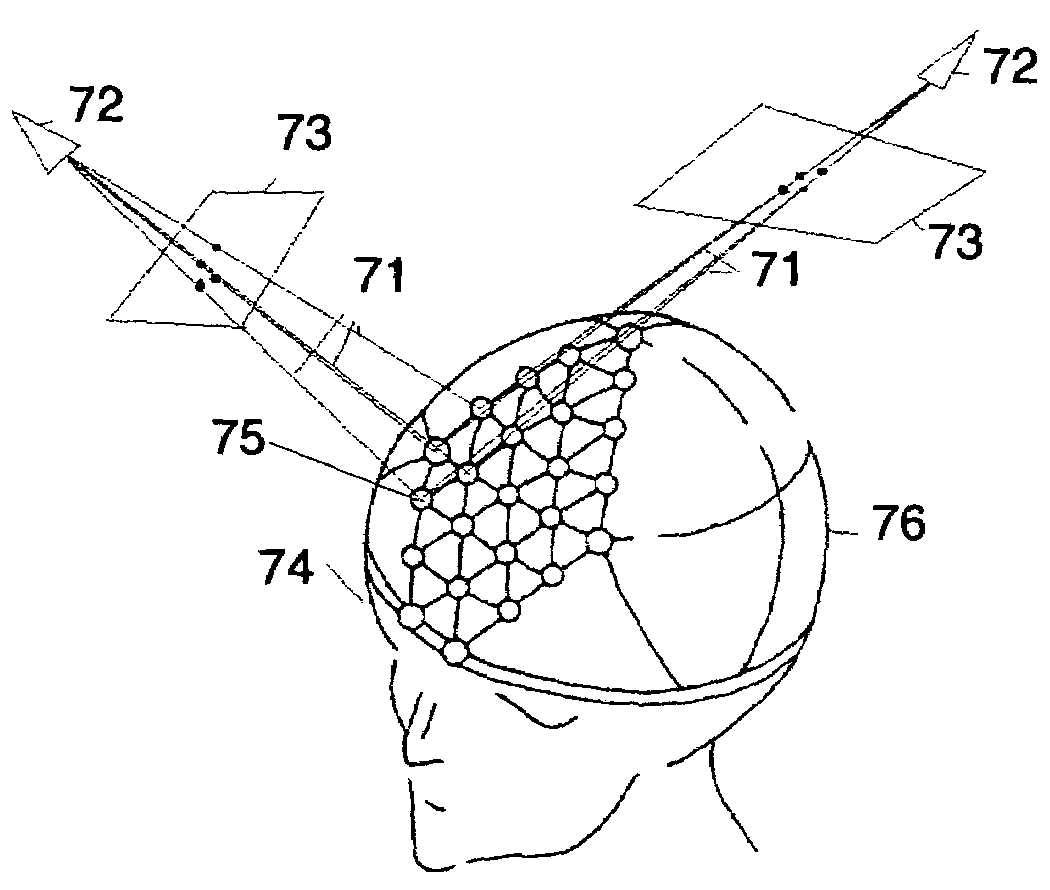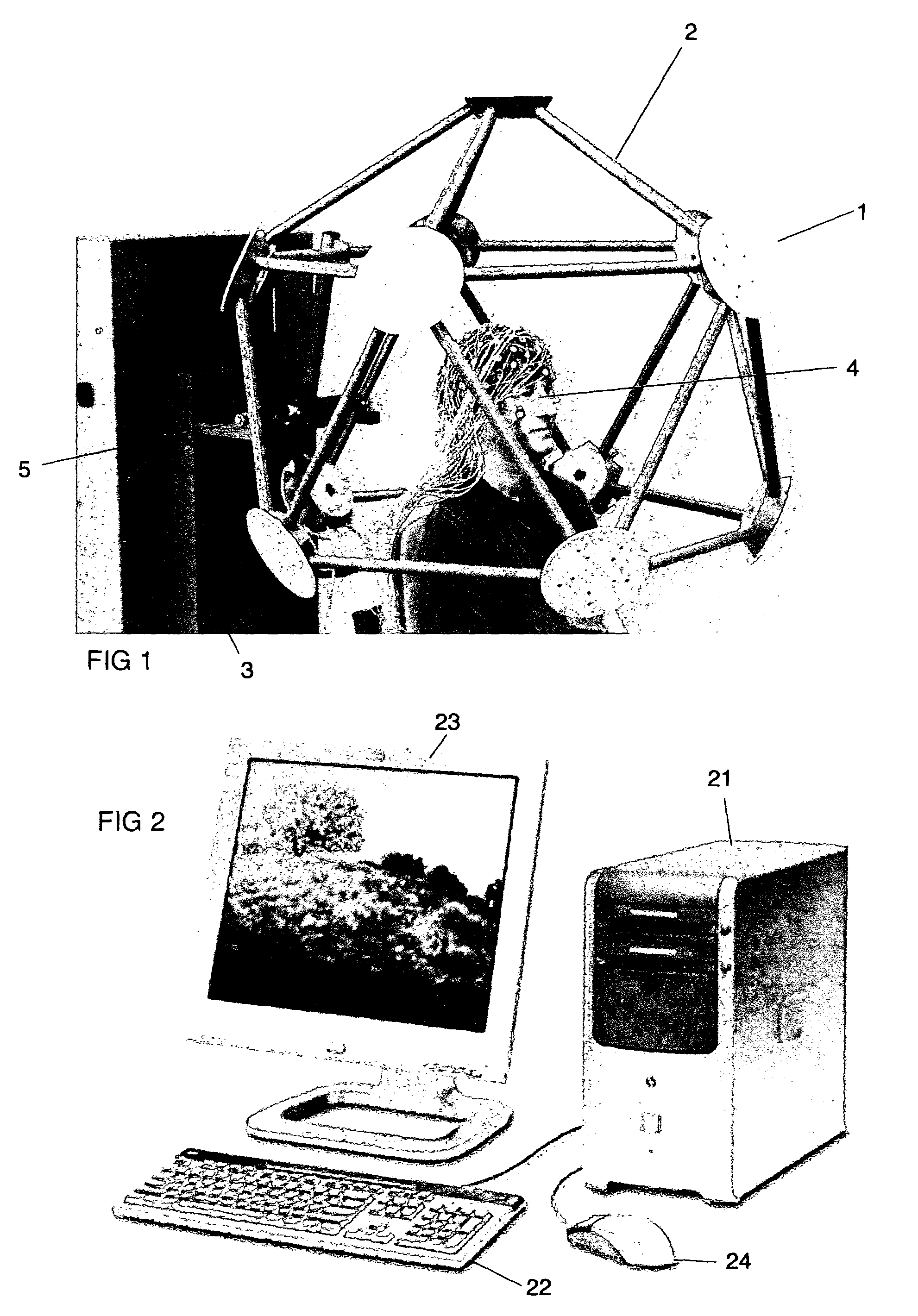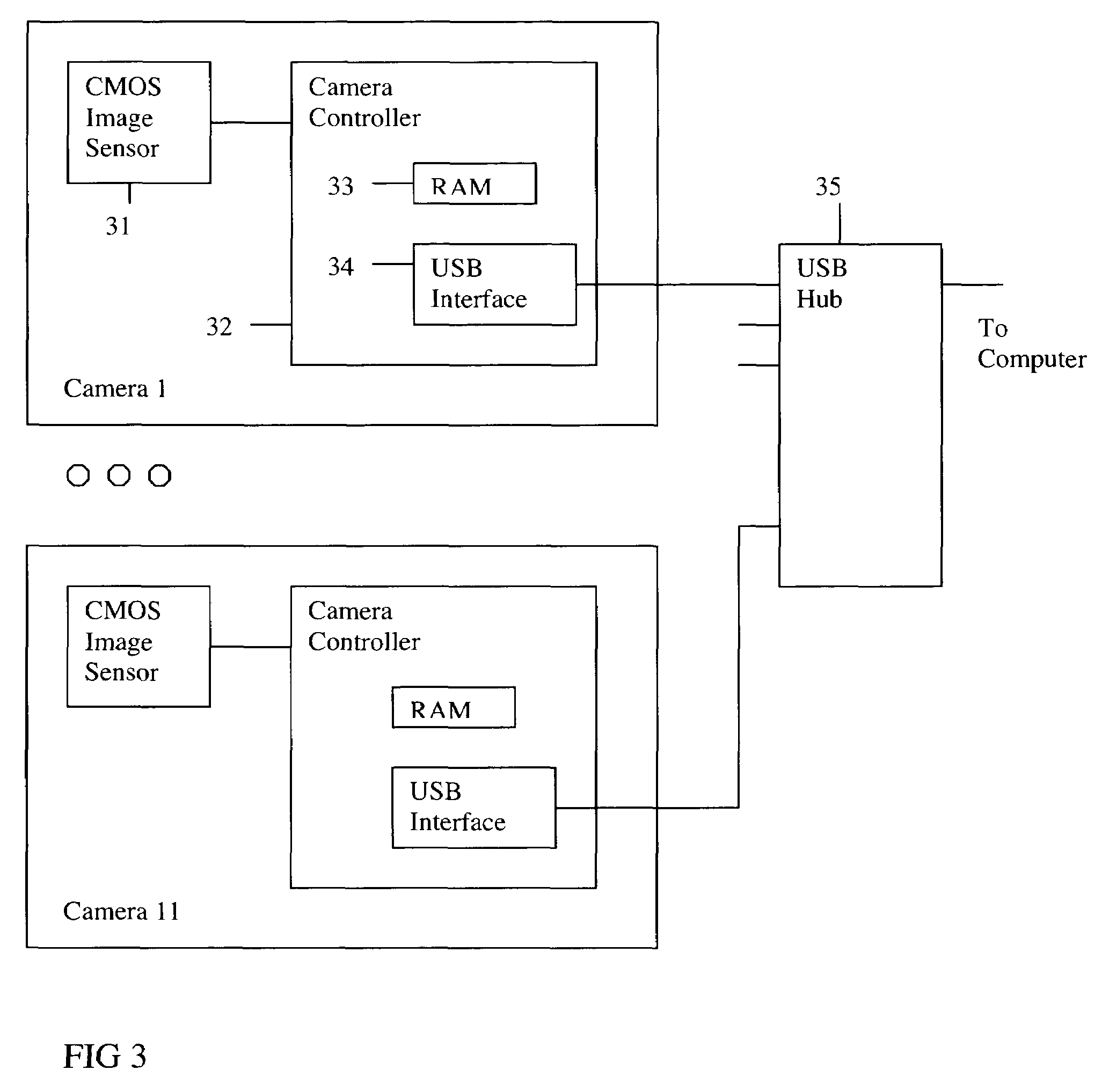Measuring the location of objects arranged on a surface, using multi-camera photogrammetry
a technology of photogrammetry and objects, applied in image analysis, instruments, computing, etc., can solve the problems of inconvenient use of electroencephalographic sensors, inconvenient use of methods, and inability to accurately measure the location of objects on a surface, etc., to achieve the effect of improving clarity
- Summary
- Abstract
- Description
- Claims
- Application Information
AI Technical Summary
Problems solved by technology
Method used
Image
Examples
Embodiment Construction
[0024]The preferred embodiment of our multi-camera photogrammetry apparatus is shown in FIG. 1. It consists of eleven cameras 1 arranged in an icosahedral geodesic structure 2. In this figure, a rolling motorized lifting and supporting structure 3 is used to position the camera gantry over the subject 4. The gantry is supported on a pivoting rod 5, and the gantry may simply be lifted upwards to allow the subject to enter or exit the system. The eleven cameras are connected to a computing means shown in FIG. 2, with a central processing unit (CPU) 21, keyboard 22, graphical display device 23 and mouse or other pointing device 24.
[0025]The preferred embodiment for the cameras (FIG. 3) uses inexpensive 640 by 480 pixel CMOS (Complementary Metal-Oxide Semiconductor) image sensors 31 to capture the video images. The sensors are supported by controller circuits 32 incorporating a local RAM (Random Acceess Memory) interface 33 for image buffering, and a USB (Universal Serial Bus) interface...
PUM
 Login to View More
Login to View More Abstract
Description
Claims
Application Information
 Login to View More
Login to View More - R&D
- Intellectual Property
- Life Sciences
- Materials
- Tech Scout
- Unparalleled Data Quality
- Higher Quality Content
- 60% Fewer Hallucinations
Browse by: Latest US Patents, China's latest patents, Technical Efficacy Thesaurus, Application Domain, Technology Topic, Popular Technical Reports.
© 2025 PatSnap. All rights reserved.Legal|Privacy policy|Modern Slavery Act Transparency Statement|Sitemap|About US| Contact US: help@patsnap.com



